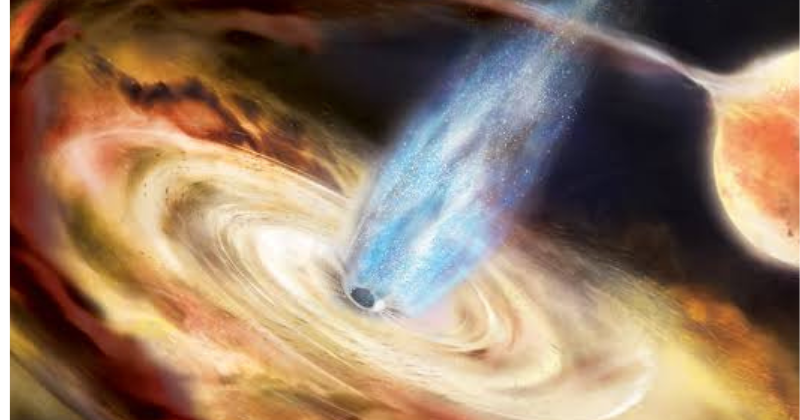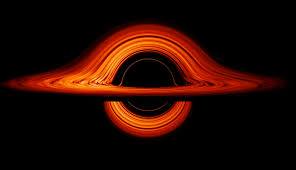Black holes, the strange objects within which time and space break down, have never directly been observed: trying to see something from which light cannot escape is a bit foolhardy (though they do emit other types of radiation that we may have glimpsed). However, Astronomers can see the effects that these objects have on their surroundings, and infer their presence. For example, observations of the stars at the centre of our galaxy suggest they’re orbiting something huge, but we can’t see anything there – the only reasonable candidate is a Supermassive Black Hole.

Such giant black holes have been observed at the centres of almost all galaxies and some of them can get very hungry, gobbling up nearby gas and spewing it out in huge jets. These active black holes are known as Quasars, and they’re some of the brightest objects in the sky. We can observe them as far back as just 700 million years after the Big Bang (the universe is 13.7 billion years old, so this is really early in the universe’s history). Such large black holes so soon after the Big Bang are controversial though – they are, arguably, too big.
The controversy centres on how astronomers believe these giant black holes first formed. One theory suggests that seed black holes, formed not long after the big bang, would slowly grow, by accrediting gas, into the giants that we see as Quasars. Unfortunately though, there is not enough time for these tiny black holes to gain enough mass. Another theory suggests that the first stars, truly giant objects with masses hundreds of times larger than our Sun, would quickly explode as supernovae and collapse in to big black holes. But again, not big enough.

Exciting stuff is that there are a few caveats, which the authors are frank about. For a start, they don’t actually model the initial collapse of the black hole, and how this actually plays out is still uncertain. They also assume that the gas cloud is spherical, that the black hole eats gas very efficiently, that there is absolutely no nearby star formation, and that the ages they estimate for each object are accurate, which is not necessarily the case (measuring the ages of such distant objects is notoriously difficult).
So there is still work to be done. But if true, the discovery will solve a long standing problem in the astrophysics of the early universe, and open up a whole new world of questions around how such objects evolve, and their connection to later galaxies.
Please follow the below links for previous chapters :-
Chapter 1 - Revealing the secret of Black Hole
Chapter 2 - Observational History of Black Hole
Chapter 3 - If falling into a Black Hole
Chapter 4 - Death by spaghettification of black hole